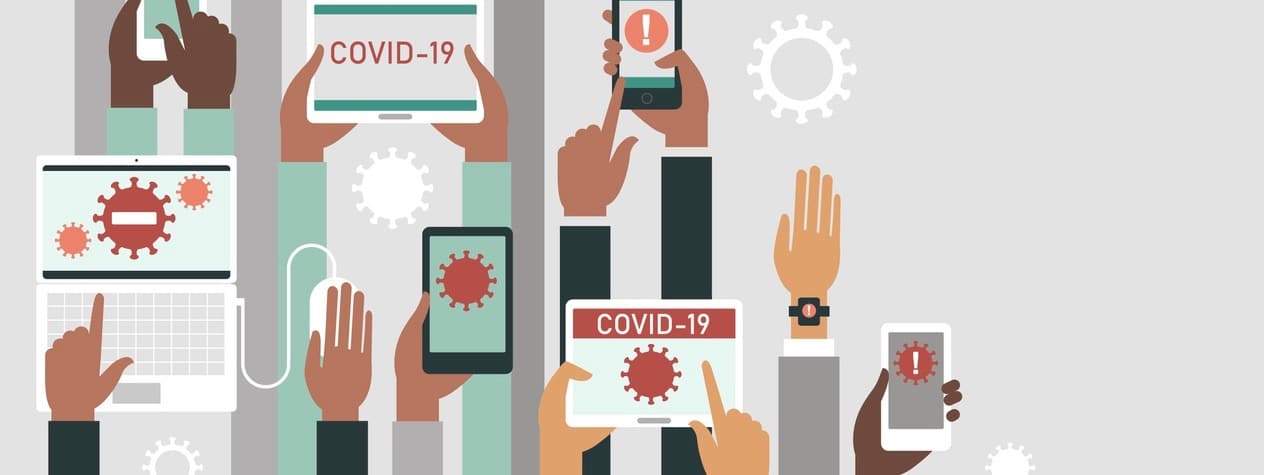For brands, deciding how and when to communicate during the current coronavirus pandemic is fraught with difficulty.
With the outbreak in full swing, we gathered six recent observations about the messages and communications channels brands might consider using (or avoiding) during these extraordinary times.
1. Never, never, try to capitalize on corona
It perhaps seems so obvious that it doesn’t need a mention but doing anything that is designed to shift product will backfire. Most brands intrinsically understand this, but there have been one or two exceptions. Trying to capitalize on coronavirus makes no business sense and will do lasting brand damage. If your approach comes from a place of caring and sharing—then a delicate shift in your story makes more sense. But please proceed with caution.
2. Think about how you can genuinely help society
These are extraordinary times, and society as a whole needs to pull together. Businesses have assets that can be used to help.
We’ve already seen remote-working tech companies offer free versions of their software to help those now working from home and giants like Facebook and Google have stepped up to try to control the flow of fake news around coronavirus. EdTech companies have offered to help schools deliver learning remotely, and retailers like Lush have been praised for opening their doors to people to hand wash.
Now is the time for businesses to consider how they can use their assets for the greater good—perhaps by lending media space, supporting community initiatives or offering their services pro bono.
If you are doing something genuinely useful and helpful, it is fine to tell people about this—particularly if doing so will help a greater number of people. However, using your owned channels to do this probably makes more sense than using, for example, a traditional press release or media briefings. Those might call your motives into question.
3. Share your own experience to help others
One thing is certain—a lot of companies are having to take unprecedented steps for the first time. So, if you’ve already had to follow unusual steps, share your experience to help others who may have to do something similar soon. For example, when we switched to fully remote working across our five offices, we shared the steps we took in the hope it would help others prepare.
But we must not stop there. Experiences, outcomes and overall impacts will help us get through this difficult time. Make sure you have a system set up where sharing such experiences will be seamless and easy.
4. Audit your content calendar for inappropriate messages
Many brands prepare content calendars days or weeks in advance for social media or newsletters. Make it a priority to double-check your copy and imagery for anything that might now be perceived as insensitive or inappropriate.
For example, UK brands marketing products for Mother’s Day (this coming Sunday in the UK) might be tempted to talk about offering the “personal touch” to Mums—perhaps insensitive at a time of widespread social distancing. We’ve also seen campaigns promoting longstanding innocuous brand messages get paused—for example, KFC’s latest “Finger Lickin’ Good” campaign. You’ve spent years building up your brand equity. Avoid negatively impacting it by losing a sense of awareness with the topics that are taking shape.
5. Think twice about flooding inboxes with white noise about basic precautions
While it is understandable that many brands want to reassure customers that they are taking steps to mitigate the threat of corona—such as ensuring all their staff are regularly washing hands, etc.—it’s not advisable to simply flood customer email inboxes with non-urgent “news” of what you are doing.
We are already receiving hundreds of almost identical messages from brands we rarely interact with. It is certainly important to be transparent with customers about your business continuity plans or steps you’re taking that might affect their experience with your brand, but rather than mass “push” communications, consider using your own properties—like your website or social channels—to publish this information.
6. Keep an ear to the ground and remain involved
These times call for everyone to step up and show a sense of urgency, but also calmness. Too much of an overreaction might fuel the ongoing panic. Begin by setting up a listening platform that tracks all relevant conversations you need to be aware of today. Make sure you adjust along the way as the conversation is sure to change and you must be ready. Stay in tune to what’s going on across channels—starting with social and earned—and be ready to adjust content, react appropriately and play your part in helping consumers, businesses and the world get through this crisis together.
If you’d like to help support the efforts behind this global pandemic, click here to visit the fundraising efforts put on by GoFundMe.
This article originally appeared on the PAN Communications blog; reprinted with permission.



